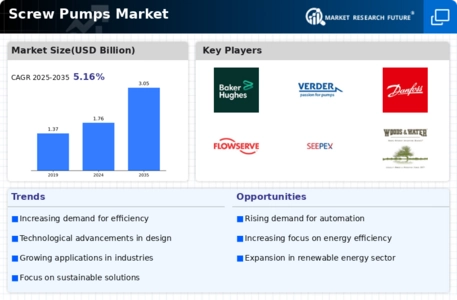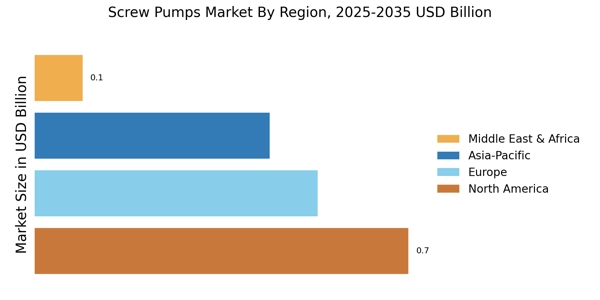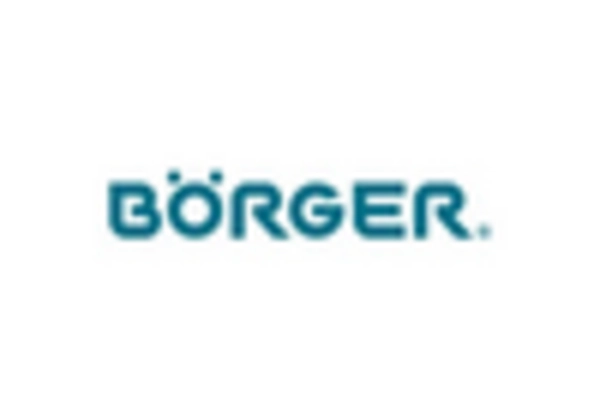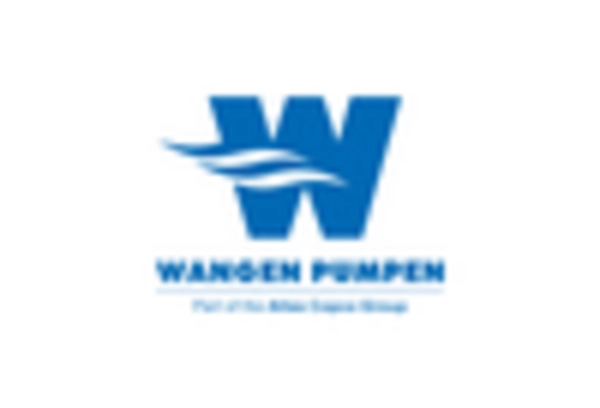Rising Demand in Oil and Gas Sector
The Screw Pumps Market is experiencing a notable surge in demand, particularly within the oil and gas sector. This increase is primarily driven by the need for efficient and reliable pumping solutions in the extraction and transportation of hydrocarbons. As exploration activities expand, the requirement for advanced screw pumps that can handle viscous fluids and high pressures becomes critical. Recent data indicates that the oil and gas industry accounts for a substantial share of the screw pumps market, with projections suggesting a compound annual growth rate of approximately 5% over the next few years. This trend underscores the importance of screw pumps in facilitating the operational efficiency of oil and gas operations, thereby solidifying their role in the market.
Technological Innovations in Pump Design
The Screw Pumps Market is significantly impacted by ongoing technological innovations in pump design. Advances in materials science and engineering have led to the development of more efficient and durable screw pumps, which can operate under extreme conditions. These innovations not only enhance the performance of screw pumps but also reduce maintenance costs and downtime for industries. Recent market data indicates that the introduction of smart pump technologies, which incorporate IoT capabilities, is gaining traction. This trend is expected to drive the market forward, with projections indicating a growth rate of approximately 5% in the next few years. The continuous evolution of screw pump technology is likely to play a pivotal role in meeting the diverse needs of various industries.
Growth in Water and Wastewater Management
The Screw Pumps Market is significantly influenced by the increasing focus on water and wastewater management. As urbanization accelerates, the demand for effective water treatment solutions rises, necessitating the use of screw pumps for their ability to handle various types of fluids, including sludge and other viscous materials. The market data suggests that the wastewater treatment segment is expected to witness a growth rate of around 6% annually, driven by stringent regulations and the need for sustainable practices. Screw pumps are favored for their reliability and efficiency in transferring challenging fluids, making them indispensable in modern wastewater treatment facilities. This trend highlights the critical role of screw pumps in addressing global water scarcity and environmental concerns.
Emergence of Renewable Energy Applications
The Screw Pumps Market is witnessing a shift towards renewable energy applications, which is likely to drive future growth. As the world increasingly embraces renewable energy sources, such as biogas and biofuels, the need for specialized pumping solutions becomes apparent. Screw pumps are particularly well-suited for handling the unique characteristics of renewable energy feedstocks, which often include viscous and abrasive materials. Market forecasts suggest that the renewable energy sector could contribute significantly to the screw pumps market, with an anticipated growth rate of 7% over the next five years. This emerging trend indicates a promising avenue for screw pump manufacturers to diversify their product offerings and cater to the evolving energy landscape.
Industrial Automation and Process Optimization
The Screw Pumps Market is poised for growth due to the increasing trend of industrial automation and process optimization across various sectors. Industries are increasingly adopting automated systems to enhance productivity and reduce operational costs. Screw pumps, known for their precision and reliability, are integral to these automated systems, particularly in chemical processing, food and beverage, and pharmaceuticals. Market analysis indicates that the integration of screw pumps in automated processes can lead to efficiency improvements of up to 20%. This trend not only boosts the demand for screw pumps but also encourages manufacturers to innovate and develop advanced models that cater to the evolving needs of automated industries.


















Leave a Comment